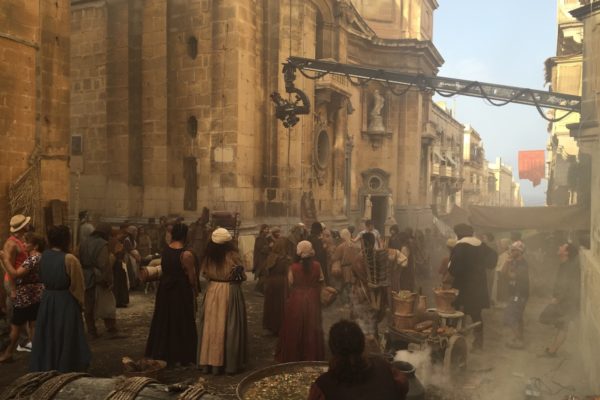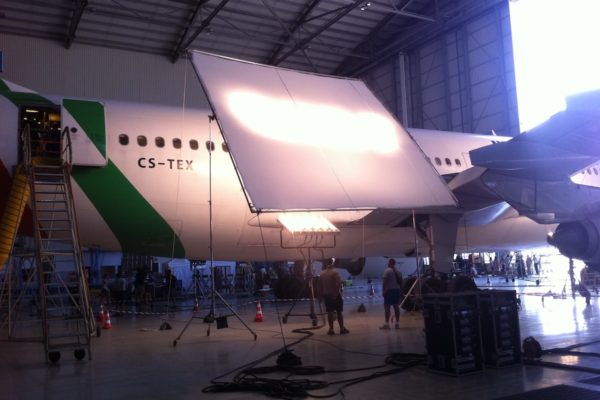This is Malta
The jewel in the Mediterranean. For over 70 years these islands have hosted some of the most renowned film makers in the world.
Malta's climate is typically Mediterranean, with sunny summers and mild winters.
Currency
EURO is the local currency.
Time Zone
Malta is on Central European Standard Time.
Language
English and Maltese are the official languages of Malta, and Italian is widely spoken.
Why Malta?
Creatively it can double up for practically anywhere in the world especially when looking for period and Middle eastern locations. Our architecture is dominated by two main foundations that have steeped the island’s history; the Order of the Knights of St John, and the Arab occupation before that. In the 16th century after the ‘Great Siege’ of 1565, the Order transformed Malta into some of the most magnificent architectural fortifications in the world. Within the confined walls came a host of cultural and artistic Baroque buildings that are still adorned to this day. Architecture in the middle ages consisted mainly of square wayside chapels, farmhouses, rock cut grottos, catacombs and miles and miles of rubble walls which today are still evident when scouting the islands.
The Maltese Archipelago
The Maltese Archipelago
The Maltese Archipelago is made up of three islands – Malta, Gozo and Comino, which are inhabited.
The Maltese Islands cover an area of 316 square kilometres. (Malta 246, Gozo 67, Comino 2.7). The population of the islands is around 500,000.
Malta is the largest island in the archipelago. The longest distance on the island, from the southeast to the northwest is some 27kms; its widest point, east to west, is 14.5kms. Malta has neither rivers nor mountains, but is characterized by a series of low, flat-topped hills with terraced fields on their slopes. Malta’s coastline is well indented with harbours, bays, creeks, sandy beaches and rocky coves.
Malta is the more urban and cosmopolitan of the islands. It has every amenity from modern residential and commercial areas to a vibrant nightlife and numerous leisure options. While the Grand Harbour area and most of the central-eastern region are built up, the countryside to the North is rugged and sparsely populated.
Capital city: Valletta.
Gozo is smaller than its sister island Malta, and has a character of its own. The Island is more rural and quieter. The countryside is greener and has some spectacular cliffs and inland scenery. A regular ferry service carries passengers and cars between Malta and Gozo. The trip takes 30 minutes.
Comino is the smallest inhabited island in the archipelago. The Island is quiet in winter but busy in summer- there are no cars on Comino, nor any other noise to disturb the peace. The Island’s numerous bays and its crystal clear waters make it the perfect choice for filming especially for underwater photography.
Getting here
Malta is closer to home than you may think. The Archipelago lies virtually in the centre of the Mediterranean sea just 90 kilometres away from Sicily. Yet Malta is a few hours flying time from most major European cities and has excellent connections.
London is merely 3 hours away, Rome 60 minutes, Frankfurt 3 hours. The national airline Air Malta operates daily flights to and from major European airports, North Africa and the Middle East. A number of low cost airlines also operate to various destinations.
Airport: Malta International Airport, 10km from Valletta.
Seaports: Grand Harbour and Marsaxlokk.
History
Although Malta has a long and illustrious history – spanning some 7000 years – three eras played the major role in shaping the present-day Islands:
The Arab Occupation from 870 to 1090 provided the basis of the Maltese language.
The Order of St John, which occupied the Islands from 1530 to 1798, shaped the Islands artistically, socially and culturally.
The British Period, from 1801 to 1964, introduced the concept of British justice with a unified code of laws, democracy and administration. The British also helped launch the Islands into the modern industrial world and linked the Islands with the worldwide community of English-speaking countries
Health
Malta has an excellent health service. Hospitals are modern and supported by a regional network of health centres. Private hospitals are also widely available. Travelers do not require certificates of vaccination or insulation to enter the Maltese Islands. It is advisable to take out a personal medical insurance policy. Malta has reciprocal health agreements with all EU countries, Australia and the United Kingdom. Nationals of these countries, visiting the Islands for no longer than one month, are entitled to free medical and hospital care in both Malta and Gozo.
Climate
Malta’s climate is strongly influenced by the sea and is typical of the Mediterranean. The islands have a very sunny climate with a daily average 9 hours sunshine in mid-winter to more than 14 hours in summer.
Winters are mild, with the occasional short chilly period brought about by the north and northeasterly winds from central Europe.
Summers are hot, dry and very sunny. Daytime temperatures in summer are often mitigated by cooling sea breezes, but in spring and autumn a very hot wind from Africa occasionally brings unseasonably high temperatures and humidity.
Telecommunications
New communication technologies are widely available. Local mobile phone companies have agreements with the major international operators. 4G broadband is widely available and roaming facilities are available with all the countries in the world.
Entry Requirements
Visas
American, Canadian and European Union nationals do not require an entry visa to enter Malta. Working visas are required for non EU citizens. Visa requirements and applications are handled by us.
It is advisable that you check in with us about visa and entry requirements before making your travel arrangements.
Working visas do take some time to be issued therefore it is advisable to start this process early.









